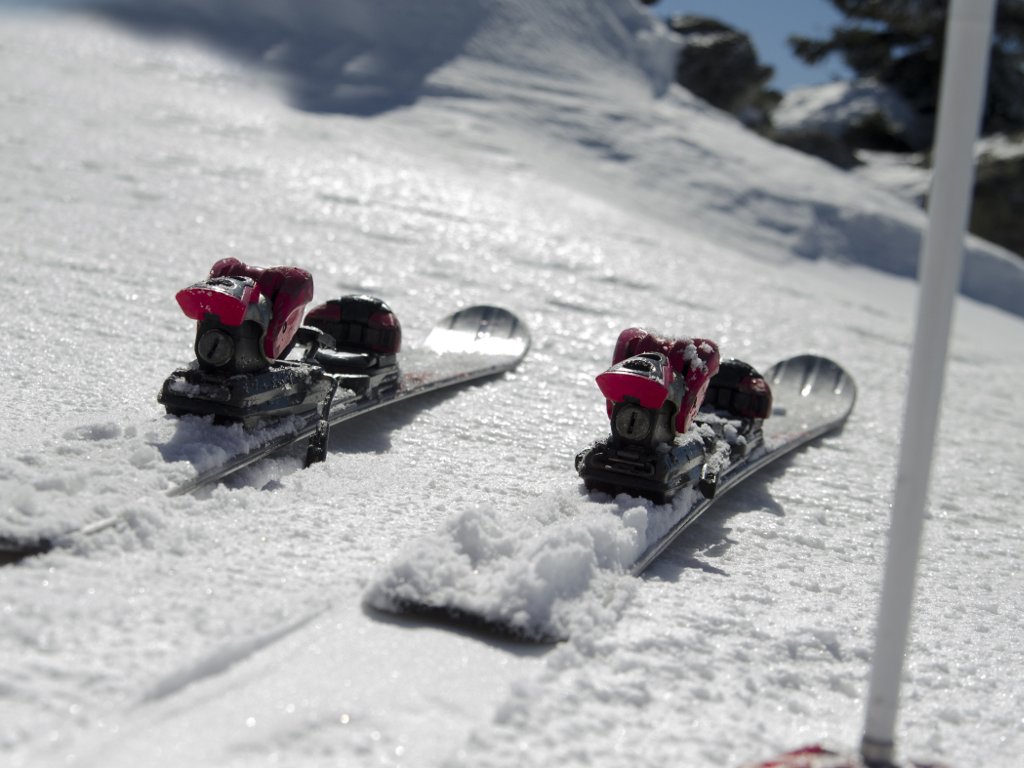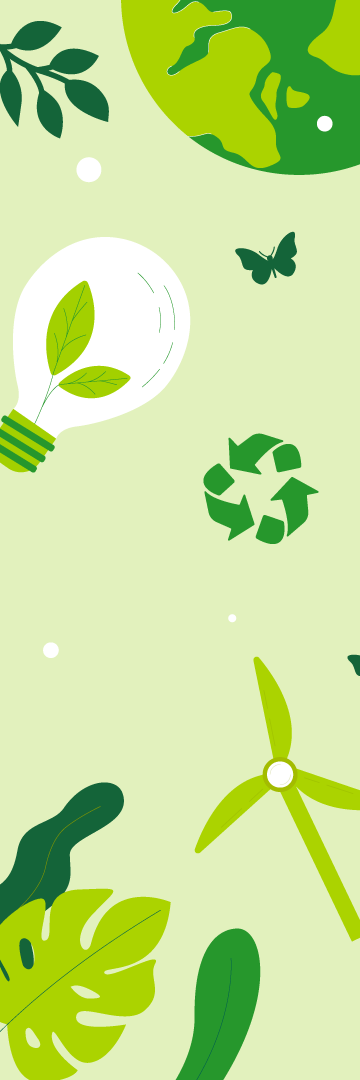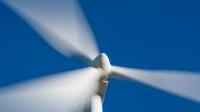The snow is gone, now what? - Serbia expecting winter that is (not) coming
Illustration (Photo: Fred T. from Pixabay)

From agriculture suffering due to dry soils, through tourist centers counting losses, up to the energy sector and water supply, the consequences are increasingly visible. Can we adapt to a time that looks less and less like the one we remember?
If we analyze the impact of climate change on winter tourism, continuous data on the snow cover at the ski centers in Serbia only started to be collected at the end of the 20th century, parallel to the development of winter tourism. In contrast, in the Alps, measurements have been made since the 18th century, considering their importance for various socio-economic sectors, explains for eKapija Irida Lazić, researcher and teaching assistant at the Faculty of Physics, University of Belgrade.
- On a global level, the data show that in most mountainous areas, the accumulated amount of snowfall decreased significantly more than in regions with lower altitude, where this trend is particularly pronounced on the southern slopes of the mountains. However, this decrease in accumulated snowfall is not as significant as the increase in air temperature which is the worst enemy of ski resorts in Serbia and the world and which melts the snow in the winter months. For example, since 1980, the Alps have warmed at a rate of 0.5 °C per decade. Considering that the temperature drops approximately 0.5 °C for every 100 meters of altitude, this means that every ten years we would have to "climb" 100 meters higher in order to stay in the same climatic conditions. Although a temperature change of 0.5 °C may not appear to be large, in climatology, this represents a significant change, as it brings with it the potential for extreme climatic phenomena. By moving towards higher temperatures, these changes bring more frequent and hotter extreme conditions that we are noticing more and more - she states.
It is similar, she adds, with the mountains in Serbia, where scientists estimate that skiing will be possible only at altitudes above 1,500 meters in the world, with a shorter ski season compared to the present.
- Due to lower altitudes, many ski resorts in Serbia, including Kopaonik, would face serious threat in the future. On Kopaonik, for example, the lowest starting point of the cable car is at 1,057 meters,
and a smaller part of the trails is below 1,500 meters above sea level. According to the maps created by the European Environment Agency (EEA), the Raška area at 1,500 meters above sea level at the end of the 21st century could experience a decrease in snowfall by 35.75% (i.e. by 90 mm) according to a pessimistic scenario, which also takes future carbon dioxide emissions into account. This reduction refers to the current climate, which is already suffering the consequences of climate change - says Lazić.
These effects, she emphasizes, become even more unfavorable, for example, when observing minimum and maximum temperatures, that show a significant increase in mountainous areas.
- To maintain the ski slopes, it is crucial that the minimum daily temperature is below zero, although it is not a guarantee of high quality trails. Often, it is the minimum temperature that records a significant increase in the mountains, making them highly vulnerable to climate change. For example, during the winter of 2023/2024, our mountains experienced one month less frosty days when the minimum temperature was below zero than usual. That is why in the last ten years we have been witnessing warmer winters more and more often, with shorter periods of cold and snow waves. It often happens that a considerable amount of snow falls on the mountains, but it melts quickly due to the high temperatures that return after short, colder intrusions of air. Unfortunately, in an era of climate change, air temperature controls snow, and statistically speaking, it is getting higher and higher - our interlocutor notes.
Should we forget about skiing?
Lazić points out that the decrease in snowfall and high air temperatures are seriously threatening tourism in ski resorts, globally and in Serbia as well. Although artificial snow systems help, they are often not enough to maintain the quality of the trails throughout the winter season in the absence of natural snow.
She quotes a scientific study from 2014 which investigates the impact of climate change on ski resorts in the Tyrolean Alps. At that time, although high temperatures and lack of snowfall were already noticeable, the impact of climate change was not considered to be high risk, and representatives of ski centers even stated: "Too much natural snow is bad for our business because it increases the cost of trail maintenance. Skiers complain about natural snow on the slopes, they want smooth tracks, that we can only provide with the help of artificial snow. Sounds absurd, but the ideal scenario for us is less natural snow, low temperatures to produce snow and lots of sun."
Illustration (Photo: Biserka Stojanovic/shutterstock.com)

Artificial snow systems, although they were previously considered a safe solution to the lack of natural snow, are now facing new challenges.
- The main problem is weather conditions, because snow cannons cannot always provide optimal trails, given that their operation depends on temperature and air humidity. An air temperature of -2.5 °C and lower allows for unhindered artificial snow, while higher temperatures require favorable conditions regarding air humidity - Lazić explains.
Given that the atmosphere is expected to become more and more humid in the future, by an average of 7% for every degree of warming, the use of artificial snow systems will be increasingly limited,
she believes adding that these systems also consume large amounts of water and energy, which creates additional challenges, especially during periods of drought which are becoming more frequent.
And Uroš Davidović, PhD student at the Faculty of Economics in Belgrade points out that although climate projections of future precipitation patterns are more uncertain than projections of future temperature outcomes, it is almost certain that favorable conditions for winter tourism and sports will deteriorate in Serbia in the future.
- Based on climate projections, we know that in the future the number of frosty days - days in which the temperature did not exceed 0ºC - will decrease in all parts of Serbia. This will certainly have a negative effect on winter tourism, primarily due to the shortening of the time window within which natural snow cover is available. By applying the artificial snow system, it is possible to create conditions for winter sports activities, but this inevitably increases costs, and consequently the service price, while on the other hand it can reduce demand, because skiers and winter recreationists value natural snow more than artificial snow, because of its characteristics - says Davidović.
Both factors, he points out, indicate that in the future ski centers like Kopaonik and Stara planina could become unprofitable as such.
- However, this does not necessarily have a negative effect on tourism as a whole. Expanding the tourist offer which would encompass additional mountain activities in situations without snow cover, like mountain biking, could attract guests with different preferences and enable the survival and further development of existing tourist centers. Basically, adapting to climate change in any sector, even tourism, depends a lot on the ingenuity and creativity of producers and service providers, but also on the evolution of consumer tastes and preferences - he explains.
The question of the profitability of using artificial snow, as he specifies, primarily depends on the ratio of future supply and demand for winter sports activities, but also from future technology, so it is difficult to give credible estimates in the long term.
Artificial snow system (Photo: Pixabay.com/Hans)

- According to current technology, in order for artificial snow to be produced at all, the air temperature must be lower than or equal to -3ºC wet bulb temperature. On the example of Stara Planina, Dr. Milica Radaković from the Faculty of Science and Mathematics in Novi Sad considered several scenarios of climate change and found that Stara Planina probably will not have suitable conditions for the development of ski tourism in the future. However, it should be borne in mind that future technologies were not considered when making those estimates, nor future consumer preferences, which is understandable, because any forecast in this sense is absolutely uncertain and unreliable - Davidović states.
The risk of drought is a real problem
Snow is a very significant element of the hydrological cycle in mountainous areas all over the world, says Irida Lazić. Mountain areas, she adds, are not only important for tourism, but hydropower, agriculture, forestry, as well as the water supply of the surrounding areas depend on the weather conditions in the mountains.
- For example, the Alps, as the highest mountain system in Europe, provide up to 90% of water for lowland areas, particularly during summer droughts. Cities such as Milan depend on Alpine runoff,
and the Rhine, Rhône and Po, which rise in the Alps, flow further into the neighboring countries, while the water from these rivers powers a large number of hydroelectric plants. Scientific studies also indicate that a lack of winter and spring precipitation, including snow, can intensify heat waves and droughts during summer. Namely, when the underground water reservoir in the soil dries up during these months, during the summer, the evapotranspiration process, i.e. water evaporation from the soil and vegetation decreases and therefore there is no additional effect of air cooling through evapotranspiration, which further leads to the intensification of these extreme climatic phenomena - explains the associate at the Faculty of Physics.
Snow cover is an extremely important meteorological phenomenon for sustainable agriculture, Uroš Davidović points out.
- In addition to protecting winter crops from frost, snow cover is also important in the hydrological cycle of a certain climate to maintain moisture in the soil and to preserve the groundwater level. In addition, the snow cover is also important for nutrient cycling, because when the snow melts, the flow of matter to the plant roots is accelerated. The absence of snow cover during winter imposes increased irrigation and soil fertilization in the later period in order to achieve appropriate moisture and nutritional value of the soil - Davidović states.
The decrease in the height and duration of the snow cover that was observed in Serbia during the immediate past and which will continue in the future as a result of climate change is already, according to Davidović, influencing changes in agricultural practice.
- Unfortunately, the snow cover by itself is not sufficient to achieve stability in agricultural production. The 2011 drought was interrupted by a high and relatively permanent snow cover at the beginning of 2012, but this was not enough to prevent one of the most extreme droughts in Serbia that followed in 2012. The agriculture sector in Serbia has been in the process of continuous adaptation to changed climatic conditions for a long time, for the simple reason that it is the most exposed to those changes. The decrease in the height and duration of the snow cover is certainly a factor in increasing the cost of food production, but whether the price of agricultural products will eventually increase depends on many factors, including climatic conditions after winter, state incentives, the selection of crops, the price of fuel, and the price of food on the world market - he points out.
Less snow - less electricity?
In a similar way as the lack of snowfall affects the reduction of the level of underground water necessary for agriculture, it also affects the level of surface hydroaccumulation reserves and the strength of the watercourses, explains Davidović. Gradually melting snow fills watercourses and lakes that are an integral part of the hydroelectric power system and thus enables relatively stable production of hydroelectric energy. However, the absence of snow cover does not necessarily have to be harmful in itself, because it can be compensated by rainfall, provided that it is relatively regularly distributed. This, he adds, does not apply to those watercourses which are dominantly fed by melting snow cover.
Illustration (Photo: Pixabay.com/Dfpost)

- When it comes to Serbia, between 25 and 30% of the total produced electricity is generated in 16 hydroelectric power plants, which is a significant share. Any serious disturbance in watercourses and reservoirs can cause difficulties in the functioning of Serbia`s energy system. Considering the energy collapse of 2022 due to negligent and unprofessional management, it can be said that energy stability could be threatened in case of an extreme drought like the one in 2012. The decrease in snowfall is probably not a dominant risk factor in the Serbian electricity industry, but combined with a prolonged drought and bad policies, can be a decisive tip in the balance - our interlocutor underlines.
What could be more expensive?
According to Uroš Davidović, the reduction of snow cover, as an isolated factor, probably will not have a direct impact on the price of goods and services in Serbia, but this is not the case when viewed through the lens of winter tourism.
- Winter tourism may be the most exposed sector, where a lack of snow could cause prices to fall or rise, depending on the width of the tourist offer. In case of exclusive ski centers, rising prices would be a more likely outcome due to the increased costs of artificial snow production, but also raising accommodation prices in order to compensate for the losses due to the decrease in the number of tourists. On the other hand, in the case of a richer tourist offer, hoteliers and apartment owners could reduce the prices of their services in order to attract additional tourists for whom winter sports are not a dominant need - he states.
Indirect impacts of snow cover reduction exist, he adds, also in the sectors of agriculture, water management and electricity, but they are only significant when combined with other risk factors.
Snowless winters are the new normal?
Statistical analysis shows that we have significantly less days with snow cover, which has been particularly pronounced in the last decade. Irida Lazić explains that "the last 10-15 years have been marked by record high temperatures in Serbia and the world, with frequent droughts, when almost every second year was dry."
- Climate change is the reason, which scientists have observed years ago. This warming trend has no plans to change its direction, even more extreme and hotter years await us in the future than before.
In that connection, it`s impossible to expect snow to the extent it was present in the second half of the 20th century - she notes.
In addition, he adds, heat waves are no longer reserved only for the summer months, but are increasingly common in the winter as well.
- Those winter and spring heat waves also have an adverse effect on agriculture due to the early start of vegetation, plants have a higher risk of frost, when the cold air penetration that is expected for that time of year often occurs. Also, it is important to emphasize that we should not neglect the preparation for snow conditions, because in the future, in addition to warming, we will also have cold periods with snow as they were more frequent and longer in the past climate at the end of the 20th century - says Lazić.
What can we do?
At the global level, with the Paris Agreement of 2015, all the countries of the world have agreed that it is necessary to reduce the emissions of gases with the greenhouse effect in order to limit global warming to below 1.5 ℃ compared to the pre-industrial period, Irida Lazić reminds. However, she points out that current trends indicate that this threshold is very likely to be exceeded. She also recalls that Serbia ratified the Paris Agreement in 2017 and thereby committed to the implementation of measures in the fight against climate change.
At the end of 2023, the Government of Serbia adopted the Program for adaptation to changed climate conditions for the period 2023–2030, with an Action Plan for 2024–2026. According to our interlocutor, these measures are of particular importance because Serbia and the entire Mediterranean region are warming faster than the global average.
- Even though a reversal in warming trends is not possible, by reducing carbon dioxide emissions we can mitigate the effects of climate change. Greenhouse gases which have been broadcast to a greater extent in the last 100+ years, remain in the atmosphere and cannot be ejected from the atmosphere,
which means that we cannot simply "cool down" the planet, nor restore the former climate. This is why global climate policies shape our future to a great extent. If emissions are not reduced, we will face serious consequences not only for nature and the living world, but also for the economy. Unfortunately, poorer countries are among the first to be affected by climate change, because they often do not have the capacity for adequate adaptation. The Paris Agreement is often mentioned precisely for this reason, because if global warming exceeds 1.5–2℃, the consequences will be serious and extremely expensive economically - Lazić notes.
Before considering potential adaptation policies for reducing snow cover, Uroš Davidović believes that it is necessary to bring the society to the level where such consideration makes sense.
- In a situation where systemic corruption has become reckless, when the share of the agricultural sector in GDP drops dramatically, and entire agricultural sub-branches such as animal husbandry are dying out, when mud is ignited in thermal power plants, when during the summer a large part of Serbia does not have drinking water, it is illusory to speculate theoretically about specific activities aimed at adapting to the reduction of the snow cover. It would be like someone planning the furniture in the attic in detail, while not even having bought a plot of land to build a house on. At the given moment, the following adjustment measures are crucial for Serbia: 1) the fight against systemic corruption (the space for adequate implementation of climate policies is drastically narrowed when priority is given to populist and potentially corrupt projects with questionable economic profitability such as EXPO), 2) adoption of a strategic plan for the development of the economy (society must decide whether it wants strategic development of mining or agriculture), 3) starting the green and circular transition with priorities in the area of wastewater treatment, construction of sewerage system and increase of water management capacity. Only then can we talk about subtle climate policies which would relate to the management of the risk of reducing snowfall - Davidović concludes.
Ivana Žikić

Click here to see the entire Special Edition Newsletter
"ECONOMICALLY ECOLOGICAL - Green is the new black"
Back to newsletter






























